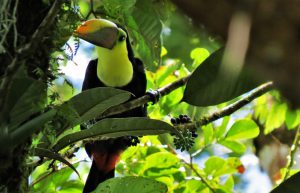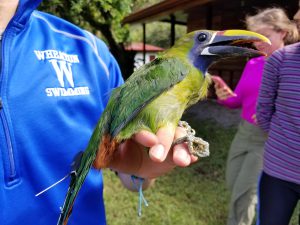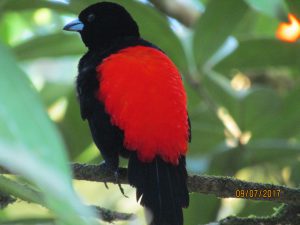
Now that we’ve reached roughly the two-thirds mark of our time in Costa Rica, I think it’s a good time to reflect back on the huge diversity of bird species we’ve seen during our time here. During the first half of the semester, Dr. Schmidt led birding walks most mornings. During these walks, the morning’s bird list was tracked through eBird, a phone app developed by Cornell as a way to gather distribution data from recreational birders (for more information, visit http://ebird.org/content/ebird/about/).
Combining these bird walk lists with incidental observations students made throughout the day, our group has seen a total of 143 species spread across 39 families (as well as one bird, the dusky-faced tanager, whose family is currently under debate). While 13 of these families are represented only be a single species, the majority have at least three to four species to their name. The most populous groups include: Trochilidae, or hummingbirds with 12 species spotted so far; Thraupidae, or tanagers with 15 species; and Tyrannidae, or flycatchers, with the group having spotted a whopping 20 species so far!


In addition to observation through binoculars, some of us were able to get up close and personal with birds caught during mist net surveys performed by local researchers. We got to watch the researchers remove the birds from the net, take morphometric data, and even attach radio transmitter tags to larger birds. Overall the trip’s been chocked full with great bird observations and experiences. While we have already seen a huge diversity of birds, Costa Rica’s total 918 species means there’s always more to find!
Grant Foster
